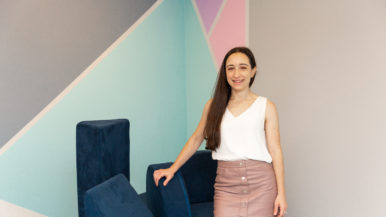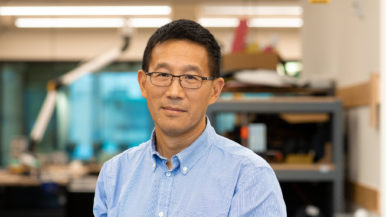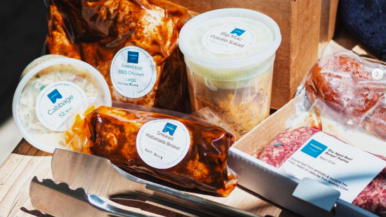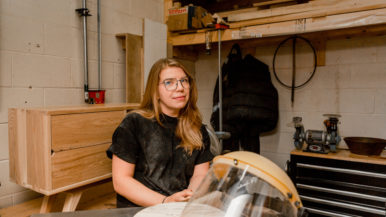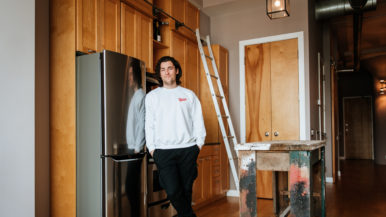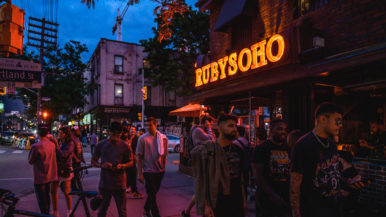“Intubation can cause a patient to cough right into your face”: A respiratory therapist describes life on the front lines
“It’s one of the most dangerous procedures for health care workers right now”

When I was in the second year of my bachelor of science degree at McMaster, I went on a six-week volunteer trip to Nepal, where I worked in hospitals. I didn’t have any medical skills, so I was helping however and wherever I could. At one pediatric hospital, I spent time comforting the kids, changing dressings and helping nurses with IVs. I was 20 at the time, and it was a turning point for me. After that, I knew I wanted to work in medicine in some way.
When I got back home, I spoke to my cousin, a respiratory therapist at Credit Valley Hospital, and she told me all about what she did. RTs are trained to help manage people’s breathing, whether it’s in the emergency department, the intensive care unit, the operating room or out on the hospital floor. That means using devices like masks and ventilators and managing how much oxygen is needed based on the various levels in the patient’s blood. When you see pictures on TV of people in hospital with a mask on their face and tube in their mouth, an RT has put them there.
I liked the idea of helping a wide variety of patients, from newborns and children all the way through to the elderly. I studied for three years at the Michener Institute, which is part of the University Health Network here in Toronto, and in 2010 I graduated as an RT. Since then, I’ve worked in the Scarborough Health Network, which operates Scarborough General, Birchmount and Centenary hospitals.
Like most people, I first heard of Covid-19 in January. I was eating lunch in the hospital, and CP24 was playing the news from China. The whole notion seemed scary but also very far away. Some of my colleagues had been through the SARS epidemic, though, and the images of people in China in hazmat suits got them worried. In mid-February, I was standing in the ICU at Centenary and one of the doctors said, “It’s coming, it’s just a matter of when.” That day, I went out to buy a few things for home: cold and flu medication, a thermometer, stuff like that.
Everyone at Centenary was scared. So much was unknown. What is this virus? How do we fight it? The hospital administration were sending lots of memos and creating policies, but because the virus was so new there wasn’t a protocol for everything. A lot of our information about Covid and how to protect ourselves came from stuff my colleagues shared in our group WhatsApp chat.
Then, all of a sudden, Covid came to Centenary. On March 15, one of the ICU doctors told us two Covid-positive patients were about to arrive. We’d been imagining this scenario for weeks; now it was real. The nurses and I put on our yellow gowns, two pairs of gloves, N95 respirator masks and plastic face shields. Then the swinging doors into the ICU burst open and the first patient came in. There was no time to feel scared.
Part of an RT’s job is to assist doctors in doing intubations, or to do them if no qualified doctor is available. An intubation is basically sticking a breathing tube down a patient’s throat into the lungs so that they can be connected to a ventilator. Right now, it’s one of the most dangerous procedures for health care workers because you’re standing at the head of the bed, right over the patient’s mouth. Sticking the tube in can cause them to cough, sending droplets right up into your face. It was my job to assist in intubating that first patient.
In terms of process, it’s the same as a normal intubation, only with an added level of fear. We sedated the patient and put the tube down using a GlideScope, which is a flat, blunt blade attached to a small video camera that holds the airway open. Then I connected the patient to the ventilator and worked with the doctor to put lines into their arteries to monitor the patient’s blood pressure and take blood samples to check their oxygen level. Afterward, in the negative pressure room, I slowly took off each piece of protective equipment, washed my hands for a long time, took a deep breath and thought “It begins.” I couldn’t sleep that night. One of my colleagues texted me. She couldn’t either.
Since that day, we’ve gone from two Covid patients to the entire ICU being full. Every day someone comes in who might have it, and we often wonder: Could Canada end up like Italy or Spain? Now that the disease is rampant, we have to treat every new patient at the hospital as if they have Covid, because there’s a risk they are an asymptomatic carrier. That means wearing proper PPE at all times. Wearing an n95 mask for long periods of time hurts my face. Some other people say it hurts their ears, but mine are OK. I’m just thankful I have a mask to wear. It’s better than nothing. Right now, we’re rationing our N95 masks and reusing our face shields. It’s not ideal, but we don’t always know when we’re getting the next shipment, so we have to ration. When I heard the news about Donald Trump blocking 3M from exporting masks, my heart sank.
Sometimes, just for an instant, I forget we’re in the middle of a pandemic. When a patient is having respiratory issues, my instinct is to run in and help, but if I don’t have the right equipment I’m putting myself, my family and my colleagues in danger. So I have to go slow, even when it feels unnatural. I’m taking other precautions, too. I leave my scrubs and my shoes at work. I hang my jacket in a separate area when I get home and I put the rest of my clothes straight in the washing machine. I’m using bleach on top of detergent just to be safe. I accidentally ruined my husband’s favourite T-shirt. He’s a lot more careful about what he throws in the laundry now. We’re also staying away from my parents, who live in Whitby, just to be safe.
My husband and I spend almost every night talking about Covid now. It’s our entire dinner table conversation. He’s working from home and cooking some really great meals, so that’s one advantage of all this. He’s in logistics at Johnson and Johnson, and he works on the supply chain for in-demand items like Tylenol and cleaning products, so he sees a different side of this crisis.
The work, to put it mildly, is stressful. A few nights ago, all the local firefighters and police and EMTs parked outside the hospital and turned on their sirens, flashed their lights and honked their horns to show us their support. I thought, Boy that’s cool. I’ve never been in a war, and we’re not dealing with guns, but in some ways, it feels like a war effort. We really are in it together, facing one enemy. More than ever, it feels like everyone at the hospital is part of a cohesive team, from the doctors to the nurses to the RTs to the cleaning staff to the administrators. During a scary time, that’s a good feeling.
